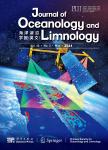Development and evaluation of specific PCR primers targeting the ribosomal DNA-internal transcribed spacer(ITS)region of peritrich ciliates in environmental samples
Development and evaluation of specific PCR primers targeting the ribosomal DNA-internal transcribed spacer(ITS) region of peritrich ciliates in environmental samples作者机构:Laboratory of Microbial Ecology and Matter CyclesYantai Institute of Coastal Zone ResearchChinese Academy of SciencesYantai 264003China University of Chinese Academy of SciencesBeijing 100049China
出 版 物:《Journal of Oceanology and Limnology》 (海洋湖沼学报(英文))
年 卷 期:2018年第36卷第3期
页 面:818-826页
核心收录:
学科分类:0710[理学-生物学] 0908[农学-水产] 0707[理学-海洋科学] 08[工学] 0815[工学-水利工程]
基 金:Supported by the National Natural Science Foundation of China(Nos.31572255,41522604,31301867) the Strategic Priority Research Program of CAS(No.XDA11020702) the Science and Technology Development Program of Yantai(No.2014ZH073)
主 题:Ciliophora Peritrichia clone library internal transcribed spacer(ITS) rDNA specific PCR primers
摘 要:Peritrich ciliates are highly diverse and can be important bacterial grazers in aquatic ecosystems. Morphological identifi cations of peritrich species and assemblages in the environment are time-consuming and expertise-demanding. In this study, two peritrich-specifi c PCR primers were newly designed to amplify a fragment including the internal transcribed spacer(ITS) region of ribosomal rDNA from environmental samples. The primers showed high specifi city in silico, and in tests with peritrich isolates and environmental DNA. Application of these primers in clone library construction and sequencing yielded exclusively sequences of peritrichs for water and sediment samples. We also found the ITS1, ITS2, ITS, D1 region of 28 S rDNA, and ITS+D1 region co-varied with, and generally more variable than, the V9 region of 18 S rDNA in peritrichs. The newly designed specifi c primers thus provide additional tools to study the molecular diversity, community composition, and phylogeography of these ecologically important protists in dif ferent systems.



